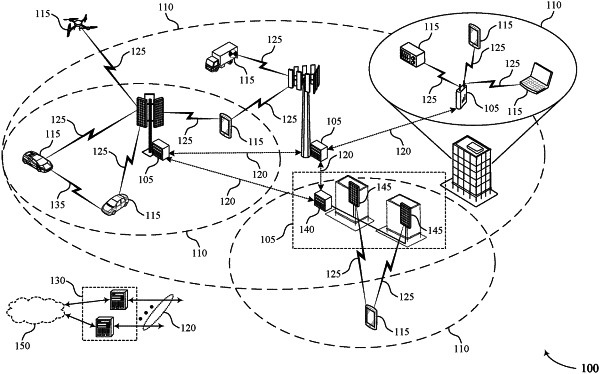| CPC H04W 72/23 (2023.01) [H04W 76/28 (2018.02)] | 26 Claims |

|
1. A method for wireless communication at a user equipment (UE), comprising:
determining a downlink configuration comprising a set of resources for receiving downlink transmissions;
determining, based at least in part on the downlink configuration, an uplink configuration comprising a set of resources for transmitting scheduling requests at a plurality of scheduling request occasions, wherein the plurality of scheduling request occasions are arranged according to a non-uniform spacing pattern in the time domain, wherein the non-uniform spacing pattern comprises at least one of:
a repeating periodicity format defining periodicities between adjacent scheduling request occasions of the plurality of scheduling request occasions; or
a repeating offset format defining time offsets between a reference time and a set of adjacent scheduling request occasions of the plurality of scheduling request occasions; and
transmitting, to a base station, one or more scheduling requests based at least in part on the uplink configuration.
|